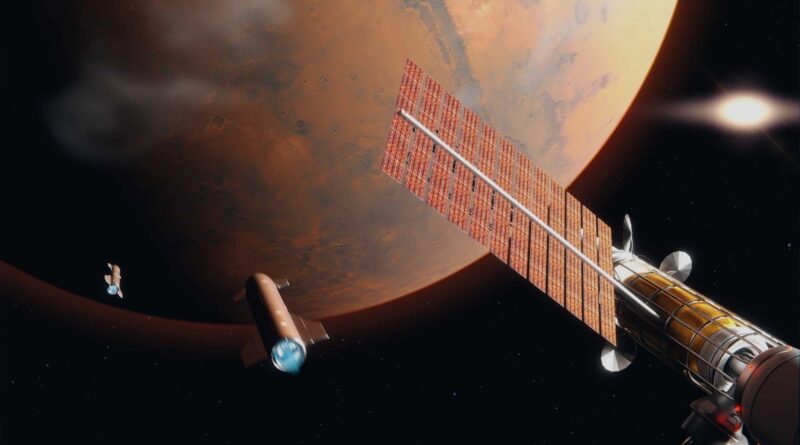Self-Repairing Solar Panels Are Heading For Space
time:2023-11-13 08:50:55 Views:0 author:Jinan Freakin Power Ltd.
Activity is heating up in space, and that means the demand for larger, more powerful space solar arrays is heating up, too. The challenge is to balance costs against power. Lifespan factors in, too. NASA has been scouting for companies that can deliver the most bang for the buck, and the Arizona startup Solestial is in the running with new ultra thin solar panels that can repair themselves in space.

Solestial cites “sustained, scaled activity on the Moon, Mars and possibly other bodies as well” among the factors driving the demand for new, more powerful solar arrays in space. Solestial already has a spot on the NASA radar, having garnered previous contracts from the National Science Foundation and the US Air Force as well as the space agency. Apparently NASA liked what it saw. In January of 2023, the agency awarded a Phase I Small Business Innovation Research contract of $149,987 to refine its new space solar panels. In the latest development, Solestial won a $849,954 Phase II contract from NASA for its project titled, “Next Generation Silicon Based Solar Arrays for Space Stations and Other Permanent Space Infrastructure.” Solestial is aiming to fill the rising demand for solar panels that can withstand the harsh conditions in space while also providing a less costly alternative to the “extravagantly expensive” photovoltaic technology used in space applications for the past 60 years. Solestial estimates that filling the demand for new satellites, space stations, and space missions will require an increase in solar capacity of 3 to 4 orders of magnitude over current levels. “This is a huge opportunity, but also a huge challenge as we’re entering a completely different environment than the one in which current space solar solutions evolved,” Solestial notes. The company also aims to prove that innovative startups can leverage new technology to gain a foothold in the space solar market, which until now has been dominated by governments and big multinational firms.
Part of the savings will come from a steep drop in launching costs, a trend that is expected to continue apace with commercial activity in space. Solestial is also depending on its new ultra-thin silicon solar cells to deliver the goods. That may come as a surprise considering the challenges of working with thin silicon technology, including issues with solar conversion performance along with significant manufacturing and application obstacles. “Ultrathin silicon cells absorb less infrared light, become very sensitive to surface passivation quality, cannot withstand processing with high thermal and mechanical stresses, cannot be processed as a free-standing device and cannot be interconnected using conventional welding or soldering,” Solestial explains. However, science loves a challenge. The company states that its new solar cells deliver an impressive solar conversion efficiency of 20% while weighing in at only 20 microns thick. The new solar cells are also “readily weldable and can be produced at a gigawatt scale,” according to Solestial. Another key factor impacting costs is longevity, and that’s where the self-repairing feature comes in. Back in March of 2023 Solestial shared the results of a validation study by the French Alternative Energies and Atomic Energy Commission. “After radiation exposure equivalent to 10 years in low Earth orbit (“LEO”), followed by annealing at 90°C under 1 sun illumination equivalent, the open circuit voltage of Solestial’s silicon solar cells dropped by only 4% and maintained 96% of its initial value,” Solestial reported.
That’s a substantial improvement over the space-hardiness of other silicon technologies. Solestial cites a 10-15% loss for the familiar III-V multijunction solar panels, solely the result of radiation damage alone. The radiation damage repair milestone of 90°C is significant because silicon self-repair typically requires higher temperatures of 200-250°C, as explained by the CEA space solar expert Romain Cariou. The higher temperature rarely, if ever, occurs in space. “The differentiation factor here is that Solestial’s cells can cure radiation damage at normal operating temperatures for solar panels in space,” Cariou stated.
As for how it works, that’s a secret. “Solestial’s silicon solar cells incorporate proprietary defect-engineering technology to self-cure radiation damage, resulting in minimal loss of efficiency over an operational lifetime,” is all they’re saying. Solestial spun out of research at Arizona State University, which does provide one small hint. Back in 2019, the school recapped the company’s decade-long investigation of thin film silicon solar cell durability. Under its former name of Regher Solar, the company “conducted simulations suggesting very thin silicon solar cells allowed high-energy protons to pass through them, minimizing radiation-induced damage,” ASU observed.




